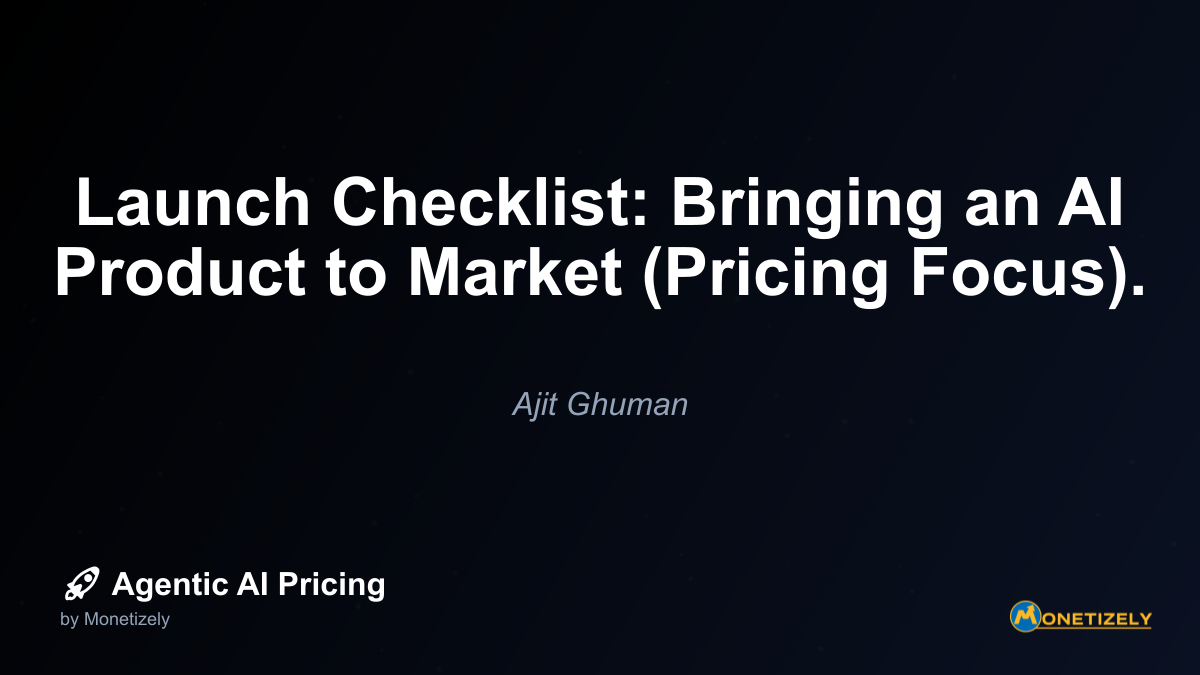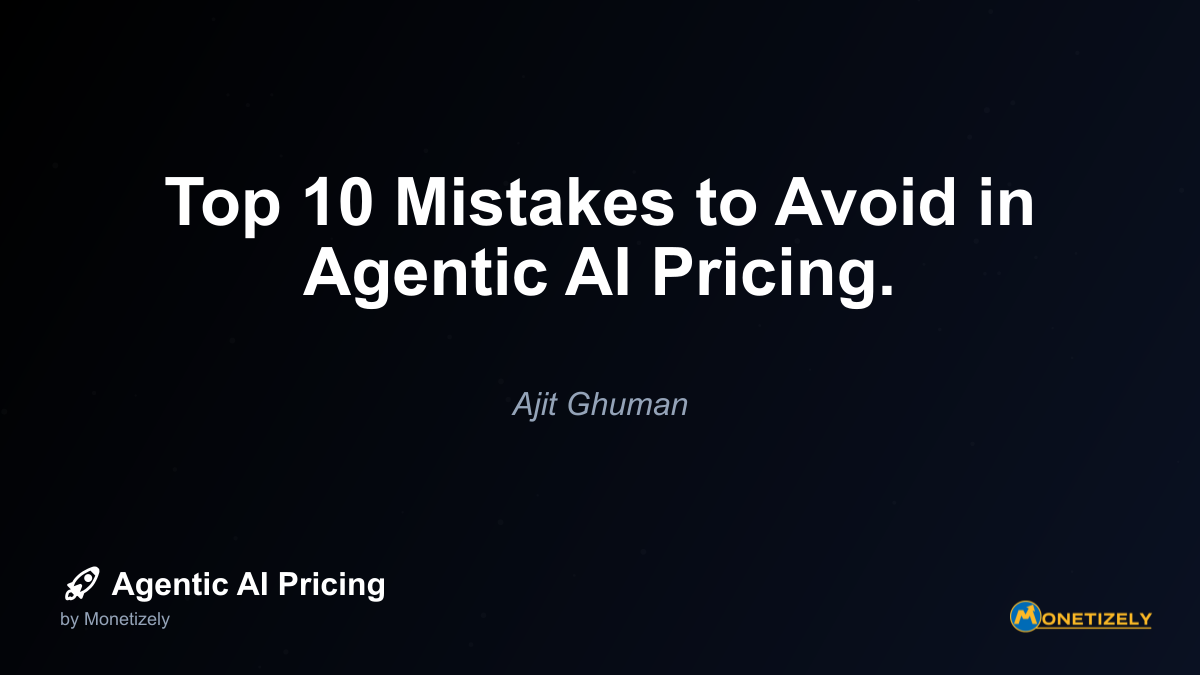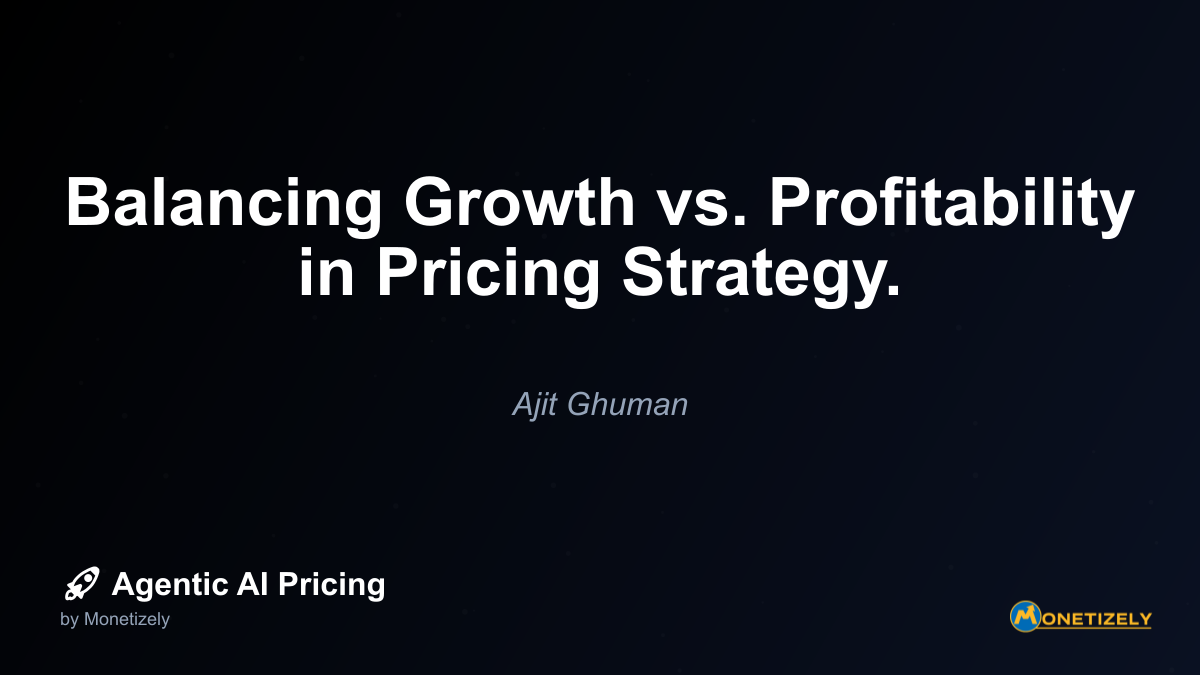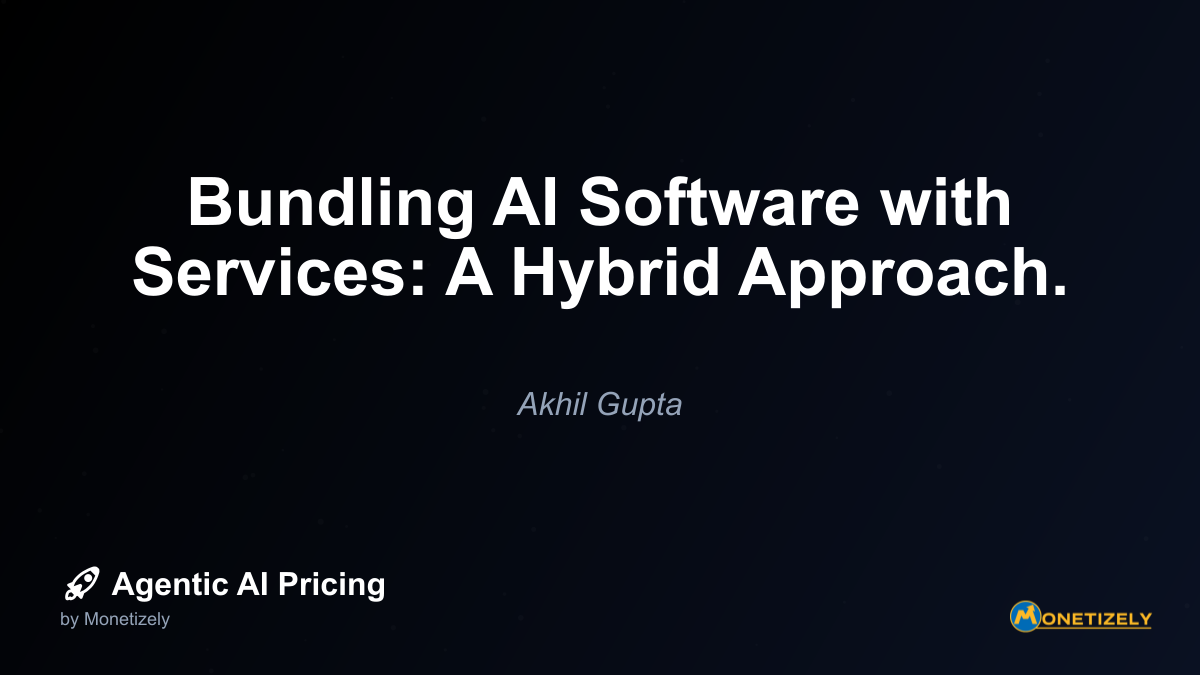· Ajit Ghuman · Strategy & Planning · 7 min read
Launch Checklist: Bringing an AI Product to Market (Pricing Focus).
AI and SaaS Pricing Masterclass
Learn the art of strategic pricing directly from industry experts. Our comprehensive course provides frameworks and methodologies for optimizing your pricing strategy in the evolving AI landscape. Earn a professional certification that can be imported directly to your LinkedIn profile.

Evaluate Willingness to Pay
With value metrics established and benefits quantified, assess customers’ willingness to pay through multiple approaches:
Direct research methods:
- Structured customer interviews with specific pricing questions
- Van Westendorp Price Sensitivity Meter surveys
- Gabor-Granger pricing research
- Conjoint analysis for feature/price trade-offs
Indirect validation approaches:
- Analyze conversion rates at different price points in controlled tests
- Monitor competitor price changes and market responses
- Review industry pricing reports and benchmarks
- Evaluate analogous markets with similar value propositions
This research should inform not just your initial price point but also your pricing structure, tier design, and potential discount strategies.
Pricing Model Selection
Choose Your Core Pricing Approach
Based on your market assessment, select a pricing model that aligns with your product’s value delivery and customer expectations. The most common models for AI products include:
Subscription-Based Pricing
- Predictable recurring revenue
- Simpler for customers to budget
- May disconnect usage from payment
- Examples: fixed monthly/annual fee for unlimited access
Usage-Based Pricing
- Direct alignment with value delivery
- Scales with customer success
- Lower barrier to entry
- May create budgeting uncertainty for customers
- Examples: per-query, per-document, or per-minute pricing
Hybrid Models
- Base subscription plus usage components
- Tiered usage with overage charges
- Platform fee plus consumption pricing
- Provides predictability while maintaining value alignment
Outcome-Based Pricing
- Payment tied to measurable results
- Most direct value alignment
- Requires sophisticated tracking
- Examples: percentage of cost savings or revenue generated
For most AI products, a hybrid approach often provides the best balance between predictability and value alignment. For instance, a base subscription that includes a generous usage allowance, with additional usage billed at a predetermined rate.
Design Your Pricing Tiers
Effective tier design creates natural upgrade paths as customers derive increasing value from your solution. Consider these best practices:
- Limit core tiers to 3-4 options to avoid decision paralysis
- Create meaningful differentiation between tiers
- Design a clear “best choice” tier for your target segment
- Use consistent value metric progression across tiers
- Consider both vertical (feature) and horizontal (usage) scaling
For each tier, document:
- Target customer profile and use cases
- Included features and limitations
- Usage allowances and overage rates
- Support and service levels
- Customization options
Most importantly, ensure each tier delivers positive ROI to its intended customer segment while maintaining healthy margins for your business.
Pre-Launch Pricing Operations
Implement Billing Infrastructure
Your pricing strategy is only as good as your ability to execute it. Before launch, ensure your billing systems can effectively:
- Track usage accurately across all billable metrics
- Generate and deliver invoices on schedule
- Process payments through multiple methods
- Handle subscription changes (upgrades, downgrades, cancellations)
- Manage trials and promotional pricing
- Support international transactions if applicable
Popular billing platforms for AI products include Stripe, Chargebee, Recurly, and Zuora, each with different capabilities and integration requirements. Evaluate options based on your specific pricing model complexity, expected transaction volume, and integration needs.
Develop Pricing Communication Tools
Effective pricing communication transforms perceived value and improves conversion rates. Prepare these essential assets:
- Value-based pricing page highlighting ROI rather than just features
- ROI calculators demonstrating specific customer benefits
- Comparison charts for tier selection guidance
- Case studies quantifying customer outcomes
- Sales enablement materials addressing common pricing objections
- Internal pricing playbooks for consistent communication
Train customer-facing teams on value articulation rather than feature description or price defense. The conversation should focus on outcomes, not costs.
Learn more about choosing between subscription and usage-based models for AI products to determine which approach best aligns with your specific solution.
Design Trial and Onboarding Programs
The trial experience significantly impacts conversion rates and sets expectations for ongoing value delivery. Design your trial program with pricing strategy in mind:
- Determine optimal trial duration (typically 7-30 days for AI products)
- Define feature access levels during the trial period
- Establish usage limitations that demonstrate value without enabling exploitation
- Create conversion incentives like limited-time offers
- Implement progressive onboarding focused on key value drivers
- Set up automated engagement touchpoints highlighting ROI
Consider whether a free trial, freemium model, or paid pilot best aligns with your product complexity and sales cycle. More complex AI solutions may benefit from paid pilots that ensure customer investment and commitment.
Launch Execution Checklist
Finalize Pricing Documentation
Before launch, ensure all pricing-related documentation is complete and accessible:
Public-facing materials:
- Pricing page with clear value articulation
- Terms of service and billing policies
- FAQ addressing common pricing questions
- Service level agreements (SLAs)
Internal documentation:
- Pricing playbooks for sales and customer success
- Discount approval matrices and guidelines
- Competitive positioning guides
- ROI calculation methodologies
All materials should maintain consistent messaging about value delivery and pricing rationale.
Create Feedback Collection Mechanisms
Establish systems to capture pricing-specific feedback from multiple channels:
- Sales team input on prospect objections and competitive situations
- Customer success insights on usage patterns and expansion opportunities
- Churn exit interviews with specific pricing questions
- Product usage analytics correlated with conversion and retention
- Direct customer feedback through surveys and interviews
This feedback loop is crucial for post-launch optimization and should begin collecting data immediately upon launch.
Prepare for Common Pricing Objections
Equip customer-facing teams to address typical pricing concerns:
“It’s too expensive”
- Redirect to ROI and value quantification
- Offer case studies demonstrating outcomes
- Compare total cost of ownership to alternatives
“Your competitor offers X for less”
- Highlight differentiating capabilities
- Focus on unique value drivers
- Discuss hidden costs in competitor offerings
“We need a custom pricing model”
- Establish clear criteria for custom pricing
- Create a structured evaluation process
- Develop ROI thresholds for customization
“We’re not ready to commit to this investment”
- Offer proof-of-concept options
- Discuss phased implementation approaches
- Provide ROI guarantees if feasible
The goal is consistent messaging that maintains pricing integrity while addressing legitimate customer concerns.
Post-Launch Optimization
Implement Pricing Analytics
Establish metrics to evaluate pricing effectiveness immediately after launch:
Conversion Metrics:
- Trial-to-paid conversion rates by tier
- Average sales cycle length
- Objection frequency by type
- Discount frequency and depth
Retention Metrics:
- Churn rate by segment and tier
- Expansion revenue percentage
- Price-related cancellation reasons
- Usage patterns preceding churn
Financial Metrics:
- Average revenue per user (ARPU)
- Customer acquisition cost (CAC)
- Customer lifetime value (LTV)
- Gross margin by customer segment
These metrics should be reviewed at least monthly during the initial launch period, with clear thresholds for intervention.
Establish Regular Pricing Reviews
Create a structured process for ongoing pricing optimization:
- Monthly reviews of key pricing metrics
- Quarterly assessments of competitive positioning
- Semi-annual evaluations of value metric alignment
- Annual comprehensive pricing strategy reviews
Each review should include representatives from product, marketing, sales, customer success, and finance to ensure holistic perspective.
Plan for Pricing Evolution
AI products typically evolve rapidly as the technology matures and customer needs become clearer. Prepare for pricing evolution by:
- Documenting grandfathering policies for existing customers
- Establishing price increase communication protocols
- Creating feature bundling/unbundling guidelines
- Developing tier adjustment procedures
- Setting up A/B testing frameworks for pricing changes
Explore implementation strategies for usage-based pricing models if you’re considering transitioning to or refining a consumption-based approach.
Special Considerations for AI Products
Address Model Training and Data Usage Concerns
AI products often raise unique pricing considerations around data usage and model training:
- Clarify data ownership and usage rights in pricing terms
- Determine if customer data improves your models and how this impacts pricing
- Consider differential pricing for customers contributing valuable training data
- Address privacy concerns through pricing structure (e.g., premium tiers for enhanced privacy)
- Establish clear policies for model customization and fine-tuning costs
These considerations should be explicitly addressed in your terms of service and pricing communications.
Plan for Computational Cost Management
AI products, particularly those using large language models or complex algorithms, face unique cost structures:
- Monitor computational costs relative to pricing tiers
- Implement usage throttling where appropriate
- Consider time-of-day pricing for non-urgent processing
- Develop strategies for managing “power users” with extreme usage patterns
- Create clear policies for API rate limiting and batch processing
Your pricing model should account for these costs while remaining comprehensible to customers.
Prepare for Rapid Technology Evolution
The AI landscape evolves more rapidly than traditional software categories, requiring pricing adaptability:
- Build flexibility into contracts and terms
- Create mechanisms for introducing new capabilities mid-contract
- Develop a roadmap for value-based feature releases
- Establish protocols for communicating technology improvements
- Consider “future-proofing” guarantees as competitive differentiators
Your pricing strategy should accommodate rapid evolution without requiring complete restructuring with each significant advancement.
Conclusion: Beyond the Launch
A successful AI product launch with pricing as a cornerstone rather than an afterthought positions your solution for sustainable growth. By following this checklist, you’ve established not just initial pricing but a framework for ongoing optimization.
Remember that pricing is never truly “finished”—it requires continuous refinement as your product evolves, market conditions change, and customer needs develop. The most successful AI companies view pricing as a strategic capability rather than a one-time decision.
Post-launch, focus on systematically gathering pricing intelligence, testing optimization hypotheses, and building organizational pricing capabilities. Consider establishing a dedicated pricing function as your business scales to ensure this critical lever receives appropriate attention.
By treating pricing as a core strategic element of your AI product launch, you’ve created a foundation for not just market entry but long-term competitive advantage in this rapidly evolving space.
Co-Founder & CEO
Ajit is the author of Price To Scale, a top book on SaaS Pricing and is the Founder of Monetizely. Ajit has led and worked in pricing and product marketing at firms like Twilio, Narvar and Medallia. His work has been featured in Forbes and VentureBeat. Ajit regularly consults with software companies from Seed stage to post-IPO on pricing strategy. Ajit is also a highly-rated co-instructor for 'The Art of SaaS Pricing and Monetization' on Maven.
Pricing Strategy Audit
Let our experts analyze your current pricing strategy and identify opportunities for improvement. Our data-driven assessment will help you unlock untapped revenue potential and optimize your AI pricing approach.




